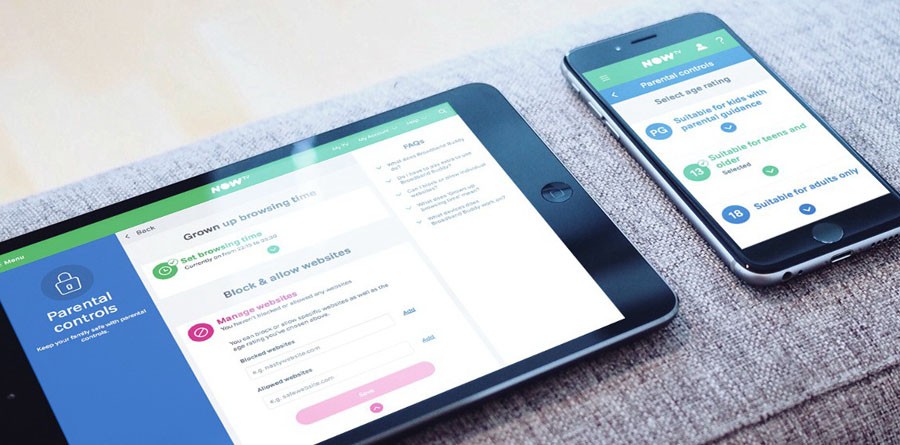
Not everything available on the social media and internet is appropriate for our children. How about considering parental guidance…

Going by global news consumption statistics, you’re probably going to be reading this article on a smart phone. If not, then an iPad or a similar handheld device. If you’re really old school, then a laptop. And if you’re actually reading this in a printed newspaper, I salute you.
To be fair, smart phones have changed the way we conduct ourselves, both in public and private. It is no longer a device we use to stay in touch with each other. The smart phone is also our encyclopedia and our butler; it is our amusement and a repository of memories.
Smart phone addiction is real. As it does not necessarily lead to any physical/mental disability (which most Class A drugs do), the addiction is harder to identify. Also, because everyone’s shooting it up anyway. When everyone’s doing something, it can’t be wrong/bad, can it? Anybody growing up in the 1980s had at least a decade and a half of a tech-free existence. There was no internet. No smart phone. No cable tv. Instead, we had Neelam Ghar, and VCRs. But the generation growing up today has been witnessing us, the elders, being consumed by technology, while at the same time, they are slowly being turned into addicts by us as well.
Nothing soothes a young child quite like a dose of YouTube. Or a few rounds of Angry Birds. And rather than engage with the child, parents are quick to hand over whatever technology they can find, and boom, the child is satiated for an hour or so. For a child of three to four years, this practice may be okay, but only for a little while. As these tech children grow older, they become more and more comfortable with the device they are using, and are not only able to wander about within the device’s ecosystem itself -- going into messages, pictures and videos -- they are also able to navigate within the application they are using, for argument’s sake YouTube.
And this is where the trouble begins.
A recent report carried by the BBC highlights that there is numerous content on YouTube that masks itself as popular cartoon shows such as Peppa Pig and Doc McStuffins to name two. According to the report, "some of the videos are parodies or have such over-the-top content that they’re clearly meant for mature audiences".
The children are too young to know. The similarities between these knock offs and the originals are enough to get the child to click on the video -- and in they go.
Sometimes, it’s not the first video that has inappropriate content. It is sometimes hidden (unintentionally or maliciously, one can only guess) into the channel’s playlist.
The same report highlights that a children’s YouTube channel which ranks as one of the top 100 most-watched YouTube accounts in the world, has videos titled Naked Hulk Loses His Pants and Frozen Elsa’s Arm is Broken by Spiderman. These videos feature animated violence and graphic toilet humour.
It gets worse. Once children learn to type, they will naturally try and search for something of interest. And get the spellings awfully wrong. What the YouTube search engine will throw up then is anybody’s guess. But the parents/guardians won’t know, because they’ll be using this precious time away from the child doing something else.
The onset of online gaming is also an area which deserves mention. Gone are the days where players would play against computer-generated opponents or go from level to level, defeating bigger and badder enemies as they progressed. Today, most games are played online, against real people. So even if you’ve managed to somehow control the kinds of media your child consumes online, do you have any idea of what goes on inside the domain of a Massively Multiplayer Online Role-Playing Game (MMORG)?
Welcome to Robolox -- a hit online game aimed at youngsters between the ages of eight and 12.
Earlier in the year, news surfaced of the game being used by pedophiles and perverts looking to meet young children. Another report detailed how one child received sickening questions and was urged to perform sex acts in virtual bedrooms within the social game platform.
The fact remains that both the internet and social media have crept up on us in a manner so insidious, that we never figured out what was happening till it was too late. Today, numerous studies exist that detail the largely negative effects these two inventions have had on the social fabric of human society. While it may be too late for us to tackle this addiction head on, the younger generation that is being shaped by our own consumption patterns, still has time.
To suggest a total tech-detox would be unfair. But care must be taken, when allowing the younger lot access to the big dark world of the social media and internet.
As a starting point, parents and guardians should understand parental locks. This is a bare minimum. Most social mediums, YouTube included, come equipped with one and custom filters can also be implemented. Another useful tool is an online portal called Common Sense Media (CSM). A nonprofit organisation, CSM provides age based ratings for movies, games, applications, tv shows, websites, books and music.
And perhaps most importantly, parents and guardians should consciously look out for sudden behavioural and/or language changes in their children.
Or we can go about our business, secure in the thought that the world is a great place, filled with well-meaning people. And run the risk of learning that we weren’t right, at a frightful cost.